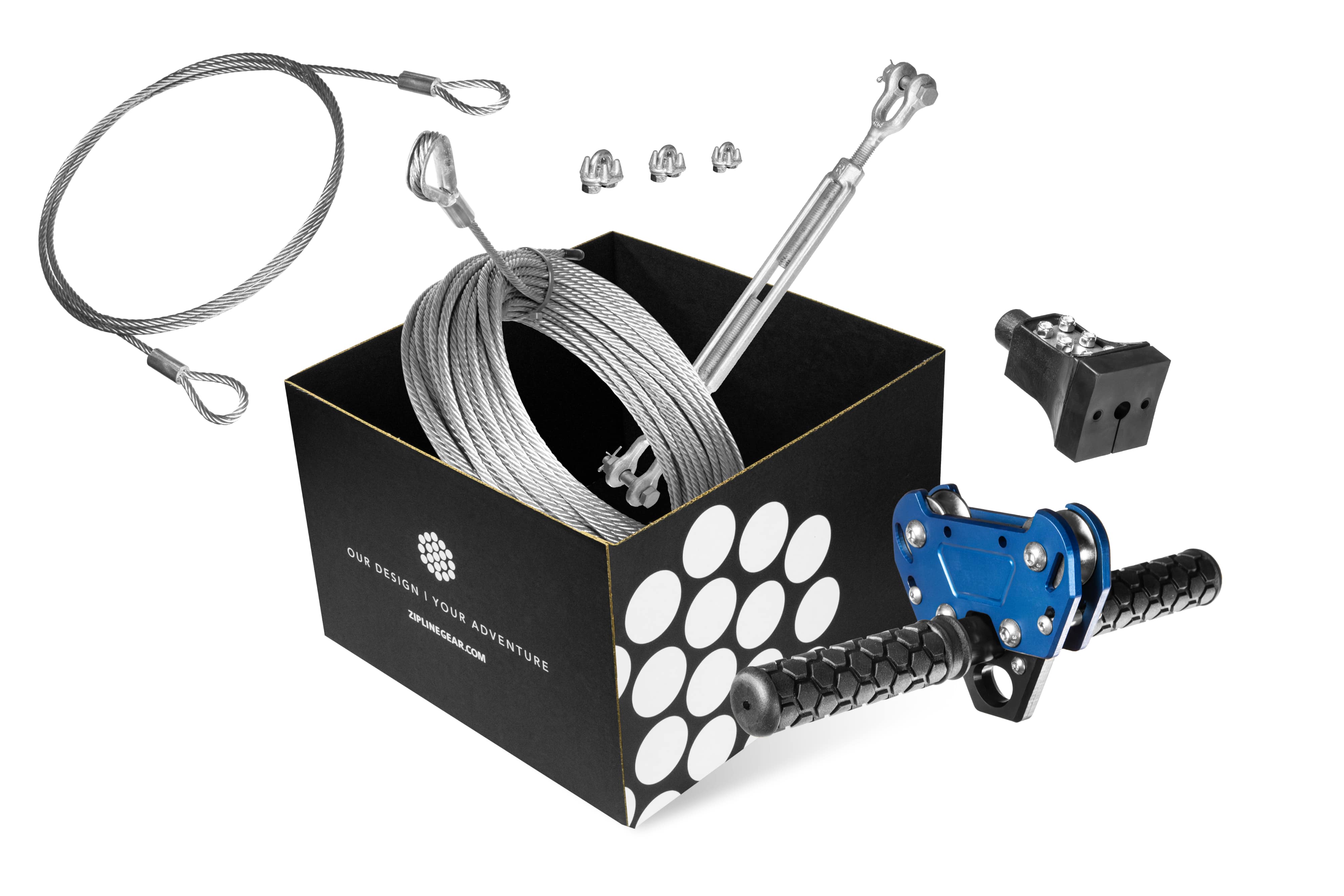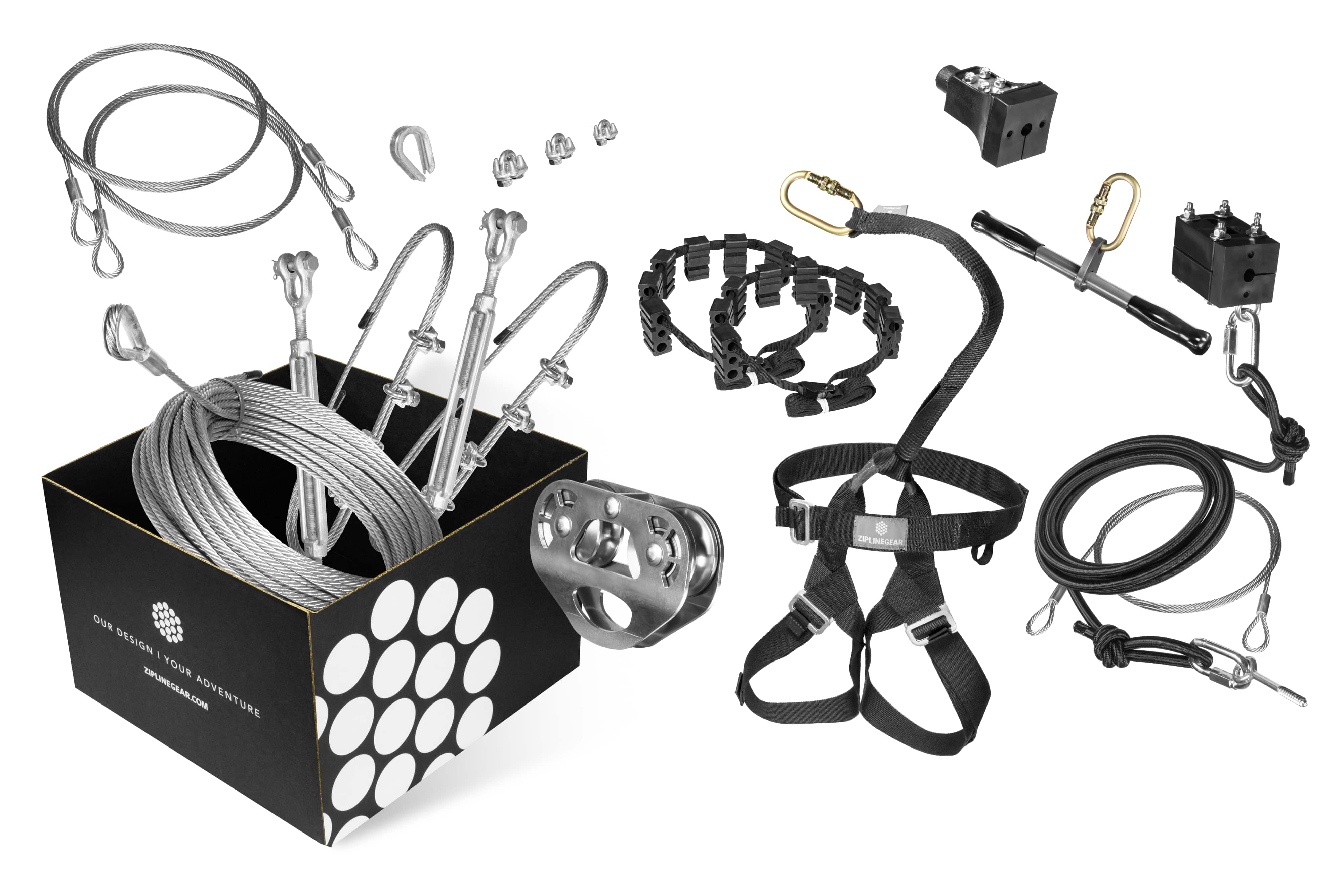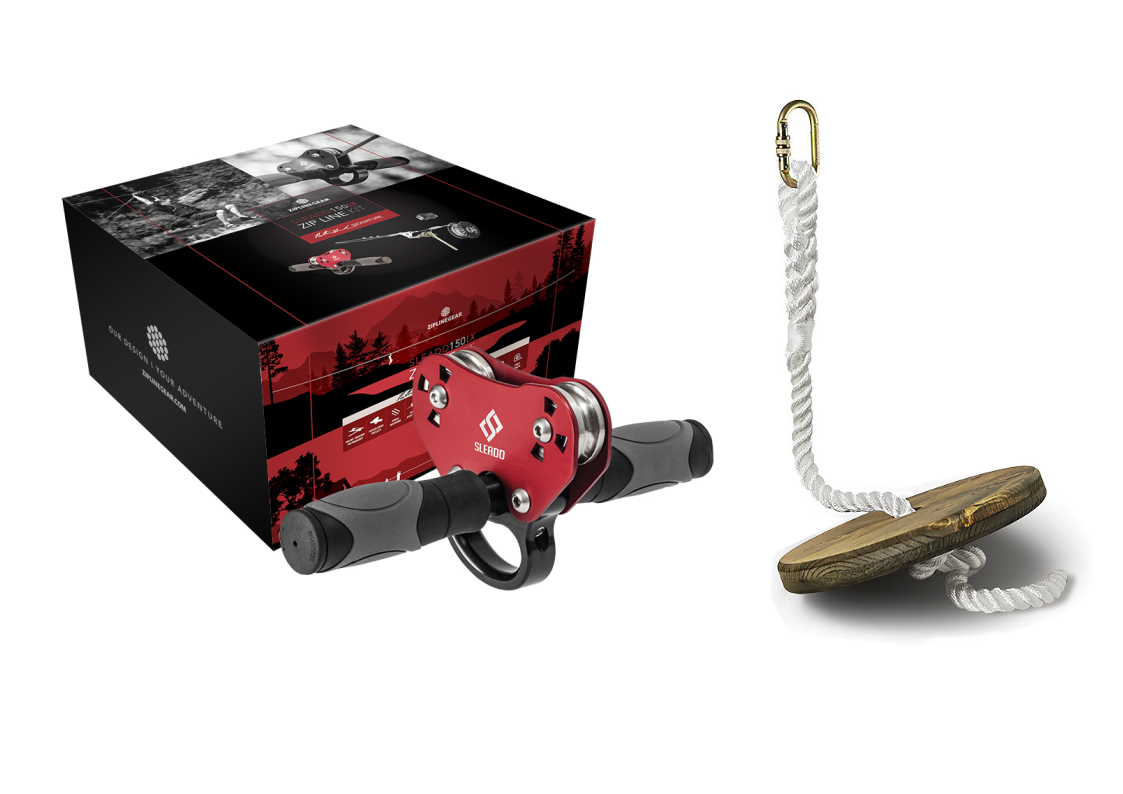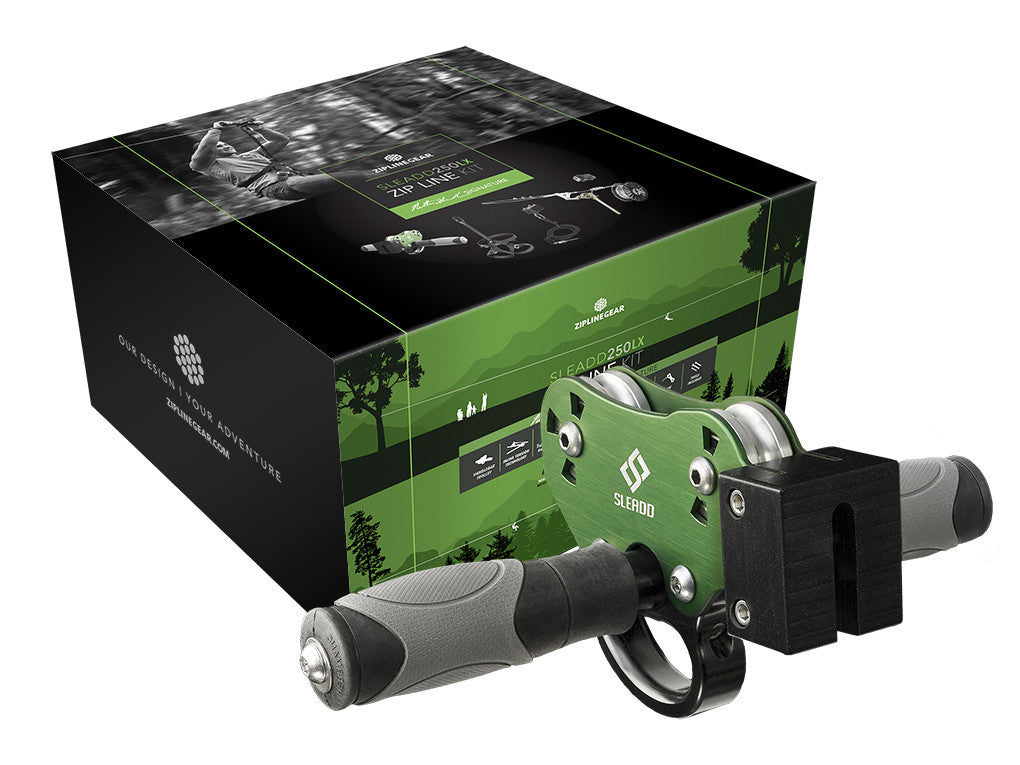
Zip Line Site Selection
Zip Line Site Selection
Selecting a location for your zip line is typically the first step in the planning process. The four most important factors to consider are 1) What anchors are available, 2) How riders will get on and off the ride, 3) The elevation path, or profile, the zip line will take during the ride, and 4) What hazards along the pathway may need to be removed or accounted for during installation. Let’s jump into each of these in more detail.
1. Anchor Points
A sturdy anchor point will be needed at each end of the zip line, with a clear path between them. If suitable trees are unavailable or not ideally positioned, installing posts or creating a custom structure is an alternative. For more information on assessing the suitability of anchors, refer to our article on Anchor Selection. The short version is that you’re looking for a live tree at least 12” in diameter at the attachment point, or a post/structure capable of significant horizontal loading. A typical backyard zip line can load its anchors with anywhere from 800 lbs of tension on the low end to 3,000 lbs on the high end.
1. Launch and Landing Locations
Before beginning the installation process, identify suitable starting and ending points. The terrain often dictates these locations and can influence the overall setup of the zip line. In some situations, the dismount location is at the end of the zip line, not necessarily at the cable's lowest point. Depending on the layout, a platform might be necessary for easy access at one or both ends of the zip line. Check out our article on Zip Line Types to see a few of the options available.
3. Zip Line Profile
The profile of a zip line is defined by its slope and sag. The slope, or grade, should generally fall between 3 to 6% over the zip line's length, promoting a gradual descent. The sag of the cable should be a minimum of 2% of the zip line's total length, to prevent over-tensioning. For a more in-depth understanding check out our Zip Line Slope and Sag article.
4. Clearance
Clearance for a zip line refers to the area clear of obstructions below and on either side of the zip line. There should be a minimum of 7 feet of clearance below and 5 feet on either side of the zip line cable (when loaded) to avoid potential hazards, including large rocks, logs, branches, and sharp objects.
In all situations, safety riding gear is crucial wherever a fall could lead to injury, regardless of the height or terrain of the zip line. The site selection process should always be conducted by an adult who has thoroughly reviewed and understood all instructional material.
Now you’ve evaluated your site and have a plan for your zip line, it’s time to pick out your gear.
- Choosing a selection results in a full page refresh.








